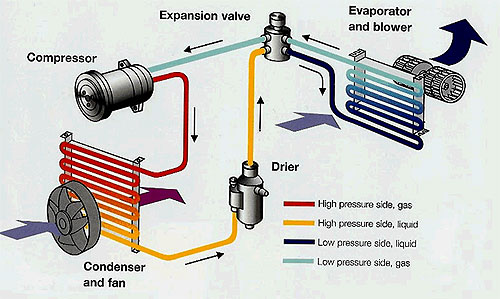Why is My A/C Running Constantly?
- Details
by Stewart Unsdorfer
I think you'll agree with me when I say:
Being hot and sticky in the summer months is bothersome and when your A/C runs constantly it can become costly and annoying. As we approach the summer months, it is a great time to troubleshoot the common causes of your A/C running all day before you get hot under the collar.
It turns out, if your air conditioner seems to be running constantly, there are a few quick troubleshooting tips you can follow to either fix the problem or at least find the source of your problem...

And in today's post I'm going to show you exactly what to look for (many of the issues can be taken care of) and ways you can prevent them from happening.
There are numerous reasons why your A/C system may seem to be running non-stop. The truth is, this may not always be a bad thing. Some of the reasons may indicate a problem with your system and others may alert you to other issues in your home that you can take steps to correct.
Improper Size and Installation Can be Damaging
It's important to start our discussion with this fact: "a properly sized, energy-efficient central air conditioning system will run fairly continuously in the summer to maintain a constant, desired temperature in your home. These systems operate at their highest efficiency level when allowed to do their job at "full tilt."
Unit Too Small: If your central air conditioner is too small, then it is going to have to work harder to cool your home. Over time, this will increase the wear and tear on your unit and reduce its life. You will also never achieve the desired coolness in your home, even though the system runs often. In addition, breakdowns will be likely.
Unit Too Large: If your system is too large, it won't effectively remove moisture from the air in your home, resulting in an output of moist, clammy air. It will actually have shorter run times than it should and use excessive amounts of electricity, resulting in higher utility bills.
Wrong Duct Size: The size of your ductwork should be relative to the size of your air conditioning unit. If your ducts are the wrong size, they may not be able to handle the airflow or distribute cool air efficiently to all parts of the home.
75% of air conditioning problems can be resolved by the correct method of installation in combination with the right-sized air conditioning unit.
If not the size, let's take a look at what you may be able to fix immediately. It's as easy as checking your filter.
Check Your Air Filter for Immediate Relief
When was the last time you changed your air filter?
If it's been awhile, it's probably dirty restricting air flow. This will cut down on the amount of cool air your air conditioner can produce, which in turn will make your A/C seem to run more through the day. When your air filter is clogged, your air handler must work harder to compensate.
Would you believe the most common reason a HVAC breaks down is due to a dirty filter?
A dirty filter makes your system work harder causing it to overheat. Cleaning the debris that builds up on your filters will aid with the flow of air. Clean or replace your filters once a month or as recommended by the manufacturer.
Without enough air flowing over the coils, the system can’t remove humidity and cool the air to the set temperature, so it keeps running when it shouldn’t.
This brings us to another possibility...
Air Conditioner Coils Covered in Dirt?
Dirt, in the form of grass clippings, pet hair or mud will block the air flow.
What happens with reduce air flow?...diminished performance. (lower energy efficiency and perhaps A/C runs non-stop)
Homeowners should have a service technician perform a system check up annually. They will inspect your condenser and evaporator coils.
Condenser coils need to be cleaned because they are exposed to the out door elements. You can maintain condenser coil efficiency by simply hosing down the unit. Turn off any electrical power first to your system.
The evaporator coils are harder to get at. The visual check is not as simple as the condenser coils. But they are in need of maintenance as well.
Griffith Energy Services sums it up nicely...
"Because the evaporator coil is continuously exposed to airflow circulated by the blower, it’s susceptible to buildup of dust or dirt. When airborne particles form a layer on coil surfaces, efficiency of the all-important heat transfer from the air to the refrigerant is diminished. This can result in poor cooling performance and higher operating costs as the system runs longer “on” cycles to meet thermostat settings."
Annual maintenance is the key to removing this unwanted dirt and dust.
full article at: http://www.centralhtg.com/blog/a/c-system-running-constantly